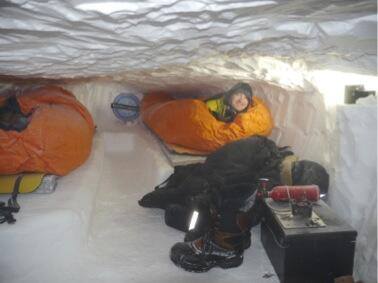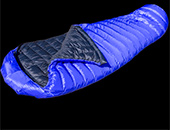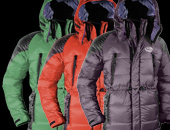PHD Testing
At PHD we take a personal approach to testing. Our downs and fabrics are world class, supplied to us with detailed technical quality figures, and our products are built to exceed the performance they are sold for. But it’s not enough, is it? As manufacturers we use figures, but we view them with a degree of scepticism wherever they come from. We know from many years of working with laboratories that they can give very accurate answers to very limited questions. So we check everything again in our own way, using practical common sense as our touchstone.
Testing Materials

We test every batch of down with our own Lorch machine
When testing materials we see ourselves as stand-ins for the customer, who has no chance to test down and other materials. Instead he or she takes on faith the figures, usually with the number of some official Standard attached. Knowing from long experience how fragile such information can be, we make a point of verifying the quality of our materials ourselves.
We are a small company with limited resources. But the advantage of being small is that it allows a closer, more direct scrutiny of our flow of materials. Taking down as an example, we are buying in kilos, not tons, and we are testing a meaningful percentage of what we use.
We bought our Lorch fillpower testing machine within months of start-up and it has been providing us with our own data ever since. Along with down samples we have kept for years, we have a long-term accurate record of the down quality we have used and are using now. Week in, week out, we monitor and establish the quality of our down ourselves, regardless of the figures quoted by our suppliers from their own laboratories.
With other materials testing is a two-part process. One part is to verify the performance figures we get from the supplier. Fabrics go for laboratory tests to confirm the main points or to fill in any gaps. Waterproof fabrics and sealing tape we can check on our own equipment. For other items such as waterproof zips we have our own in-house methods, unorthodox, but effective. The other, and more valuable part, is simply to make samples and use them, preferably in conditions beyond what they were designed for. Tough on the testers, but good practice.

Testing a PHD sleeping bag at -51ºC in Antartica
There’s nothing revolutionary about testing materials: all manufacturers do it. But large scale production of cars, compost, or down jackets brings its own problems. Tests take time, so it is only possible for big manufacturers to test a fraction of their large usage themselves. Even independent laboratories can do no better. So the responsibility is passed back to the suppliers and sometimes back to their suppliers and so on. In the main it works well, but the scope for potential errors becomes spread very wide, as reputable companies like Honda and Boeing have learned to their cost.
In fact the tests at the final stage of large scale production are useful only to flag a potential problem. The result is to give manufacturers (and the people setting up official standards such as EN) an ‘at least’ mind-set – ‘at least let’s be sure of quality X’. It’s the cautious and sensible way for them to approach the job and it covers the majority of usage fairly well. But it doesn’t work adequately with materials and products which lie at the highest levels of performance and for these the manufacturer has a real responsibility to carry out the final checks. All of them.
Of course the most useful tests take place outside. Put all your materials together, make your product, and see how it stands up when the weather gets really unfriendly. But field tests do not remove the need for constant material testing. Is the down in Mr Smith’s jacket the same as in the one the tester took up Denali a year ago? There’s only one way to be sure of that.




















